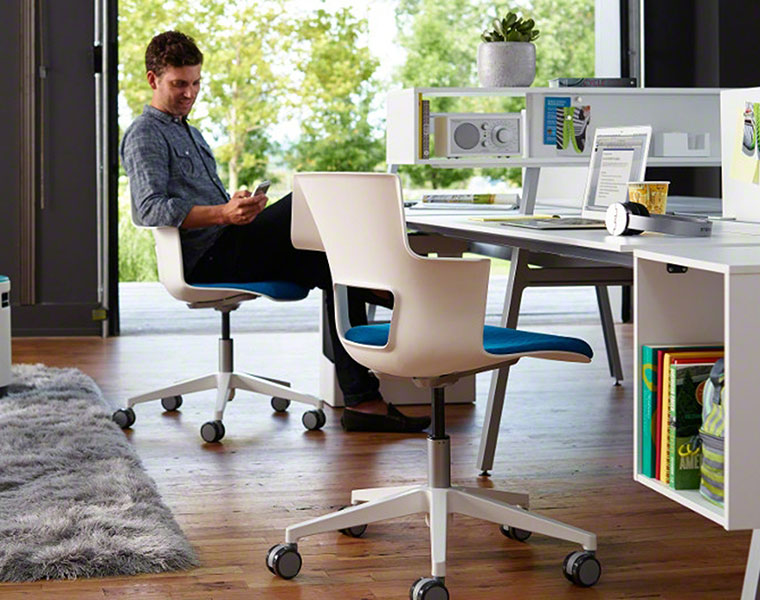In years gone by, pay rises and bonuses were a fail-proof way for employers to put a smile on the faces of any staff that seemed a little underwhelmed or demotivated. These days, these are simply quick wins.
Our opinion is that genuine job satisfaction runs much deeper than that now and at its core, is a number of less materialistic factors including workspace design and office culture.

In our blog post about the modern employment benefits you should consider, we shared statistics which show that a fun working environment is worth 914% more than employee discounts*.
This just demonstrates our theory and supports the argument that true job satisfaction is dramatically influenced by the look and feel of a workspace, as well as the attitudes and values it displays.
In fact, according to Motivates’ Living to Work report, 40% agree that a feeling of satisfaction would inspire more motivation than their basic salary.

With that in mind, here are just some of the ways office interior design can improve motivation, satisfaction and talent retention:
More professional autonomy through choice & control
In its latest annual job exodus survey, Investors in People revealed that 31% of people would rather have a more flexible approach to working than a 3% pay rise.
With flexible working and agile working becoming increasingly important to those within the modern workforce, it’s essential that employers start offering more choice and control if they want to nurture happy staff.

Allowing staff more freedom around where, when, how and with whom they work will grant them more responsibility and breed a culture of trust and transparency between employer and employee.
Improved physical health & mental wellbeing
There are many elements of workspace design and office culture which can contribute to improving health and wellbeing, including:
- Biophilic design to improve air quality, cognitive function and immunity
- Agile working to encourage more physical movement throughout the day
- A diverse range of work settings to reduce stress and frustration levels

Of those UK employees who took part in the Living to Work report, 27% cited health and wellbeing as being one of their major concerns.
So, as an employer, if you can take measures to sooth these worries, it’ll go a long way towards improving job satisfaction and workforce happiness.
Stronger relationships & communication lines
A quarter of Motivate’s respondents said that poor senior management communication was one of the main reasons for a lack of motivation.
Not being able to communicate freely or feeling intimidated by other members of staff will only lead to frustration and job dissatisfaction.

Tackle these barriers by including spaces such as breakout areas and a WorkCafe where the professional hierarchy can breakdown and staff can communicate on a more level playing field.
Accommodating an inclusive & diverse workforce
Something which is becoming increasingly important in the commercial interior design industry is diversity and inclusion; designing for a more multi-able, multi-cultural and generally more diverse workforce.
Whether it’s physical ability, lifestyle choices or ethnicity, everybody in workplace needs to feel included, respected and equally valued in order to have job satisfaction.

Click for further reading on inclusive office design.
A better balance between work & play
You don’t need us to tell you that striking a healthy balance between professional and personal lives is crucial for both job satisfaction and overall wellbeing.
However, with 21% of Motivate’s survey participants admitting that they have a poor work-life balance, it’s clear that this is still a prevalent issue.

Our advice?
- Incorporate resimercial design features which helps make the office feel homelier
- Provide social spaces and areas for rejuvenation to encourage regular breaks and casual interaction between staff
- Consider the benefits of a pet-friendly work policy
- Introduce flexible working so that staff can tailor their working day around personal commitments where is reasonable
*Glassdoor
